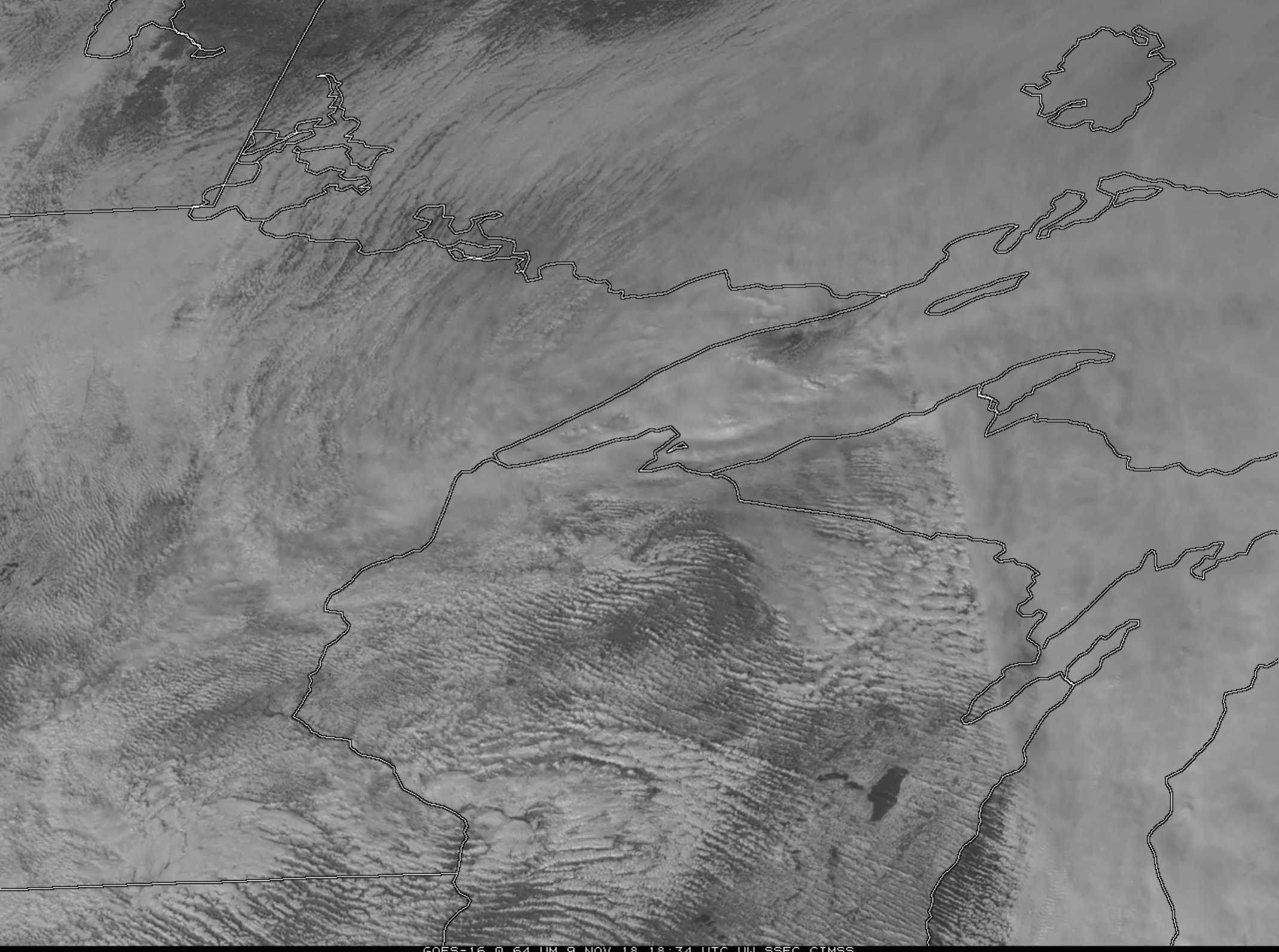Lake-enhanced snow along the south shore of Lake Superior
NWS Duluth requested a GOES-16 (GOES-East) Mesoscale Domain Sector to monitor the potential for lake-enhanced snowfall along the south shore of Lake Superior on 09 November 2018 — and 1-minute “Red” Visible (0.64 µm) images (above) showed the cyclonic flow around abroad area of low pressure over the Great Lakes (surface analyses), along with the formation of convective elements within the northeasterly flow over western Lake Superior.A closer look at GOES-16 Visible imagery (below) showed that as the convection moved inland over north-central Wisconsin and far western Upper Michigan, moderate snow developed at Ashland WI and heavy snow was reported at Ironwood MI beginning around 2030 UTC. GOES-16 GLM Flash data did not indicate any lightning associated with the lake-enhanced convection. Hourly surface wind barbs are also plotted; 10-minute wind data for Buoys ROAM4 and DISW3 are available here and here — northerly wind gusts at Buoy ROAM4 reached 25.2 m/s (49 knots) at 2257 UTC and 21.1 m/s (41 knots) at Buoy DISW3 at 2048 and 2202 UTC.
GOES-16 “Red” Visible (0.64 µm) images, with hourly surface weather type plotted in yellow and wind barbs (knots) plotted in cyan [click to play MP4 animation]
![Suomi NPP and NOAA-20 VIIRS Visible (0.64 µm) and Infrared Window (11.45 µm) images, with Topography [click to enlarge]](https://cimss.ssec.wisc.edu/satellite-blog/wp-content/uploads/sites/5/2018/11/181109_viirs_visible_infrared_Lake_Superior_anim.gif)
Suomi NPP and NOAA-20 VIIRS Visible (0.64 µm) and Infrared Window (11.45 µm) images, with Topography [click to enlarge]
![Snow Depth at 12 UTC on 09 and 10 November, plus 24-hour snow accumulation ending at 12 UTC on 10 November [click to enlarge]](https://cimss.ssec.wisc.edu/satellite-blog/wp-content/uploads/sites/5/2018/11/181109_181110_snowdepth_snowfall_DLH_les_anim.gif)
Snow Depth at 12 UTC on 09 and 10 November, plus 24-hour Total Snowfall ending at 12 UTC on 10 November [click to enlarge]


